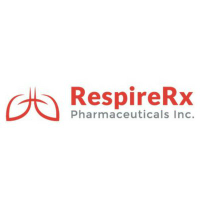
RespireRx Pharmaceuticals Inc (CE) (RSPI)
USOTC

 LTListener
17 hours ago
LTListener
17 hours ago
 vinsterr
17 hours ago
vinsterr
17 hours ago
 LTListener
17 hours ago
LTListener
17 hours ago
 vinsterr
18 hours ago
vinsterr
18 hours ago
 Catpole
18 hours ago
Catpole
18 hours ago
 LTListener
18 hours ago
LTListener
18 hours ago
 bigtalan
19 hours ago
bigtalan
19 hours ago
 Catpole
19 hours ago
Catpole
19 hours ago
 Catpole
19 hours ago
Catpole
19 hours ago
 LTListener
19 hours ago
LTListener
19 hours ago
 bigtalan
19 hours ago
bigtalan
19 hours ago
 LTListener
20 hours ago
LTListener
20 hours ago
 Catpole
21 hours ago
Catpole
21 hours ago
 Gladiator 83
21 hours ago
Gladiator 83
21 hours ago
 Catpole
21 hours ago
Catpole
21 hours ago
 Menace212
22 hours ago
Menace212
22 hours ago
 Menace212
22 hours ago
Menace212
22 hours ago
 LTListener
22 hours ago
LTListener
22 hours ago
 Menace212
22 hours ago
Menace212
22 hours ago
 BurgerKing82
22 hours ago
BurgerKing82
22 hours ago
 LTListener
1 day ago
LTListener
1 day ago
 LTListener
1 day ago
LTListener
1 day ago
 Catpole
1 day ago
Catpole
1 day ago
 bigtalan
1 day ago
bigtalan
1 day ago
 Catpole
1 day ago
Catpole
1 day ago
 bigtalan
1 day ago
bigtalan
1 day ago
 Catpole
1 day ago
Catpole
1 day ago
 BurgerKing82
1 day ago
BurgerKing82
1 day ago
 LTListener
2 days ago
LTListener
2 days ago
 Menace212
2 days ago
Menace212
2 days ago
 Menace212
2 days ago
Menace212
2 days ago
 LTListener
2 days ago
LTListener
2 days ago
 bigtalan
2 days ago
bigtalan
2 days ago
 bigtalan
2 days ago
bigtalan
2 days ago
 Menace212
3 days ago
Menace212
3 days ago
 bigtalan
3 days ago
bigtalan
3 days ago
 bigtalan
3 days ago
bigtalan
3 days ago
 LTListener
3 days ago
LTListener
3 days ago
 marcis
3 days ago
marcis
3 days ago
 bigtalan
3 days ago
bigtalan
3 days ago
 bigtalan
3 days ago
bigtalan
3 days ago

It looks like you are not logged in. Click the button below to log in and keep track of your recent history.